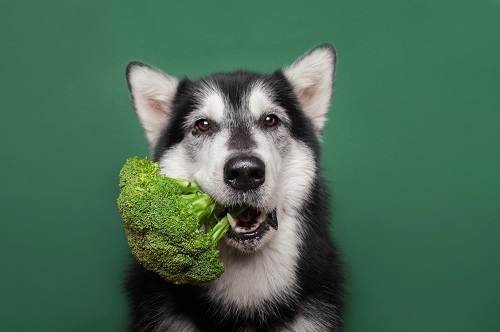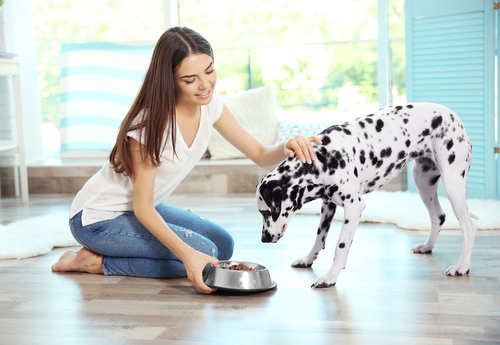Dogs are hardworking, loyal, adorable, and, honestly, pretty darn perfect. That’s why they deserve the very best: the softest embarrassing doggie sweaters, that really good dog bed with the memory foam, the squeakiest of dog toys, and, of course, tasty treats on demand. The problem is, hitting the shelves at your local pet supply store or supermarket for treats on the regular can really add up – especially so for large breed dogs and multi-dog households. What’s a loving pet parent to do?
The answer is surprisingly simple: make homemade pet treats from the comfort of the kitchen! Even the most novice of home cooks can quickly and easily whip up a batch of healthy, delicious, and canine-approved cbd dog treats out of CBD pet products, armed with, in most cases, nothing more than a cutting board, stove, oven, and freezer. In this article, we are going to cover some of our favorite pet treat recipes that you can make for your four-legged friend!
Canine Cuisine: What’s Safe For Dogs To Eat?
Almost every pet parent is guilty of sneaking tidbits to their best four-legged buddy under the table now and then. A dropped French fry here, a stray meatball or two there – it’s one of the fringe benefits of being man’s (or woman’s) best friend. When it comes to homemade dog treats, however, it’s best to keep an eye on nutrition rather than the “kitchen sink” approach with leftovers tossed in. Here are a few healthy, natural treats for dogs that have been vet-approved:
- Chicken and Turkey: Inexpensive, easy to prepare, and loved by dogs everywhere, plain chicken or turkey is always a big hit. While it’s natural to want to put a human spin on seasoning and preparing these proteins, remember that a dog’s palate is very different from his owner’s tastes. Salt, sugar, and certain seasonings can upset his stomach or even cause serious health issues like canine vomiting or diarrhea, so avoid them and cook fowl by boiling or simmering in plain water, not oil. Any turkey or chicken given to dogs needs to be either stripped from the bone or made from boneless cuts/ground: both raw and cooked bones can splinter and cause internal injuries.
- Beef: After chicken, beef is one of the most common proteins found in most high-end commercial dog foods, and lean beef is an excellent treat for a dog’s overall health, coat, and energy levels. Avoid exceptionally fatty cuts of beef, as this can disrupt a dog’s natural digestion and cause “problems” at both ends. Similar to chicken, no sauces or seasonings should be used on any beef destined for canine treats.
- Pork: The “other white meat” is safe for dogs, though owners should, as with other proteins, stick to lean boneless cuts that are unseasoned and prepared with salt-free cooking methods. While many commercial dog treats offer bacon flavored options, real bacon is typically too fatty and salty to support canine health, so it’s best to leave it out.
- Meat Broths: If using canned or boxed variety broths, opt for plain, low-sodium varieties. They’re great for pouring over kibble to make it more enticing, and also make a great base for freezer-prepared treats. Avoid homemade broths that contain problematic ingredients like onions, garlic or other seasonings.
- Plain Yogurt: The probiotic content of plain, unsweetened yogurt, such as Greek yogurt, make this inexpensive dairy aisle staple a wonderful, healthy treat for pups. Avoid brands that are sweetened or that contain fruit; sliced fruit can always be added in fresh later, where it won’t bring any unnecessary sugar to the mix.
An important note on yogurt for dogs: Xylitol, a sugar substitute that is used commonly as sweetener in many foods – including some yogurt brands – is extremely toxic to dogs. Specifically, this ingredient is used in several commercial brands of low sugar or diet yogurt. That’s why it’s important to always check the ingredient list for Xylitol before buying or using yogurt to create homemade dog treats – and if it’s in the product, leave it on the shelf!
- Peanut Butter: A familiar sight in afterschool snacks and grade school lunches across the country, this protein-rich paste is an ideal medium for dog treat recipes and freezes well. Choose no/low sugar, unflavored, and low sodium varieties for dog treats, and like yogurt, check the ingredient list to ensure no Xylitol is used in the recipe.
- Fruit: While not all fruit is suitable for dogs, there are more than a few inclusions that are not only safe, but also beneficial for their health. Bananas are a great supplement, particularly when paired up with peanut butter for protein, as are blueberries, strawberries, cherries (pits removed), apples (seeds/core removed), and coconut in limited amounts, due to its high fat content.
- Milk: Because lactose can cause issues with digestion in some dogs – cow milk, of course, not being a staple food of their wolf ancestors – limited amounts are recommended. However, it’s still generally safe to add a little bit into treats. Vets usually recommend trying out a small amount of milk first and watching for signs of lactose intolerance (gas, diarrhea, vomiting, etc.) before introducing any significant amounts into a dog’s diet or treats.
- Eggs: As an easy, inexpensive protein, eggs make a great inclusion in homemade dog treats – not only for their muscle-building nutrition, but also from the vitamins and minerals they contain. Egg yolks contain soluble vitamin A, which helps with both bone growth and vision acuity in dogs, and clean eggshells can be crushed fine or powdered and mixed into food for extra calcium, too. Vets recommend about 1 egg a day for most medium-to-large sized breeds, and about half to three-quarters of an egg maximum daily for smaller breeds, depending on size.
- Vegetables: Vegetables such as carrots, green beans, broccoli, sweet potatoes, and celery are wonderful for “roughage” as well as nutrition for dogs. Provided they’re washed well, these fiber-rich, vitamin-packed vegetables can be incorporated raw or cooked into virtually any dog treat recipe. Steer clear of problematic vegetables like onions, garlic, and avocados, as these can all be toxic to dogs in any form, cooked or raw. Read here for a comprehensive list of fruits and veggies that are safe – or off-limits – for pets.
Homemade Dog Treat Recipes: Canine-Tested, Pet Parent Approved
Because dogs are generally very happy to get tidbits of what they consider “human” food, creativity is the name of the game in making pet treats. There are several methods that work well for preparing snacks for the family pup, and even a few helpful tools to make the process easier.
When making homemade treats for dogs, one of the most useful tools to have on hand is a silicone mold. These flexible pans and individual molds are extremely versatile, with high-quality versions able to safely brave both the freezer and the oven for double duty. A large bowl helps mix and blend properly, and a silicone spatula comes in handy for combining and doling out portions into your molds of choice. If no silicone mold is available, lined cupcake tins work very well too. When cutting or portioning dry/baked treats, a shot glass makes an excellent cookie cutter substitute in a pinch.
There are two ways to make dog treats at home: following a recipe, or experimenting with dog-safe ingredients. When taking the latter route, here’s the easy 3-step process that will work for virtually all combinations of the foods noted above:
Step one: Blend, mash, and liquefy
Uniform consistency is ideal for any dog treats being frozen, as well as for baked recipes to make canine-safe “dog cookies.” A traditional blender can be used, but a food processor often produces a finer, more uniform mixture in a shorter period of time. For peace of mind and nutritional safety, it’s best to fully cook all proteins, including eggs, before incorporating them into dog treats. While many fad canine diets and niche dog foods feature “raw” meat ingredients, these can potentially carry disease and make a dog sick. Cook all proteins with little to no oil, no salt, no sugar, and no seasoning for the best results.
Step two (optional): Add in texture variation
Whole blueberries, chunks of cooked meat, whole oatmeal and grains, and frozen peas and carrots are great for stirring into the mash or base mix of your dog treats, particularly if freezing is on the menu. In order to keep your texture additives from sinking to the bottom of the molds during cooking or freezing, try filling them halfway, freezing or par-baking (depending on the recipe), and then filling the rest of the mold. This method ensures there will be little pieces to enjoy throughout the treat.
Step three: Prepare the finished treats
After baking (in the case of grain or flour-based dog treat recipes) or freezing, unmold the treats individually onto a clean, dry surface. Room-temperature treats can be wrapped in waxed paper, tossed in a zip-top plastic bag, or stored in a container: refrigerating them is the best idea in terms of food safety for dogs. Frozen treats can be zip-bagged and left in the freezer to grab as needed, and usually remain viable much longer than room temperature treats. It’s always a good idea to scribble the “date made” on the container, and dispose of the treats after about 1-2 weeks, or if any concerning discoloration or odor appears. While dogs have a famously resilient stomach, for the sake of indoor “accidents” and carpeted areas, it’s always a good idea not to test that theory.
Making dog treats at home is not only rewarding, but often easier on the wallet than store-bought treats! Dogs love treats made with their favorite ingredients (even leftovers), and because they’re not as picky as humans tend to be, experimentation is welcomed and encouraged by canine companions.
If you’re looking for the best treats for your dog without the effort of home cooking, you may want to check our canna-biscuits. Our dog biscuits are organic, made with natural ingredients in the USA, and most importantly baked with love. With 3 flavors you can choose from, Maple Bacon, Banana Biscuits for Dogs, and Turkey Dog Biscuits, find your pet’s favorite treats.
Sources Cited:
- Burke, Anna. “Can Dogs Drink Milk?” American Kennel Club (AKC) (akc.org), July 23, 2018, https://www.akc.org/expert-advice/nutrition/can-dogs-drink-milk/ Accessed January 31, 2021.
- Elliot, Brianna. “Can My Dog Eat This? A List of Human Foods Dogs Can and Can’t Eat.” Healthline (healthline.com), December 14, 2017, https://www.healthline.com/nutrition/human-foods-for-dogs#TOC_TITLE_HDR_32. Accessed January 31, 2021.
- “Can Dogs Eat Yogurt?” 1-800 PetMeds (1800petmeds.com), (no published date), https://www.1800petmeds.com/can-dogs-eat-yogurt/a230014.html. Accessed January 31, 2021.
- “25 Simple Dog Treat Recipes: Made With 5 Ingredients or Less.” PuppyLeaks (puppyleaks.com), November 12, 2020, https://www.puppyleaks.com/simple-dog-treat-recipes/. Accessed January 31, 2021.






